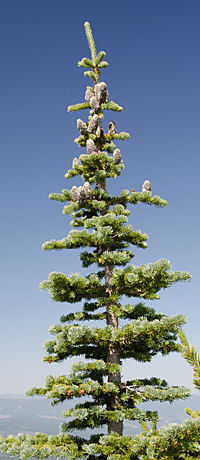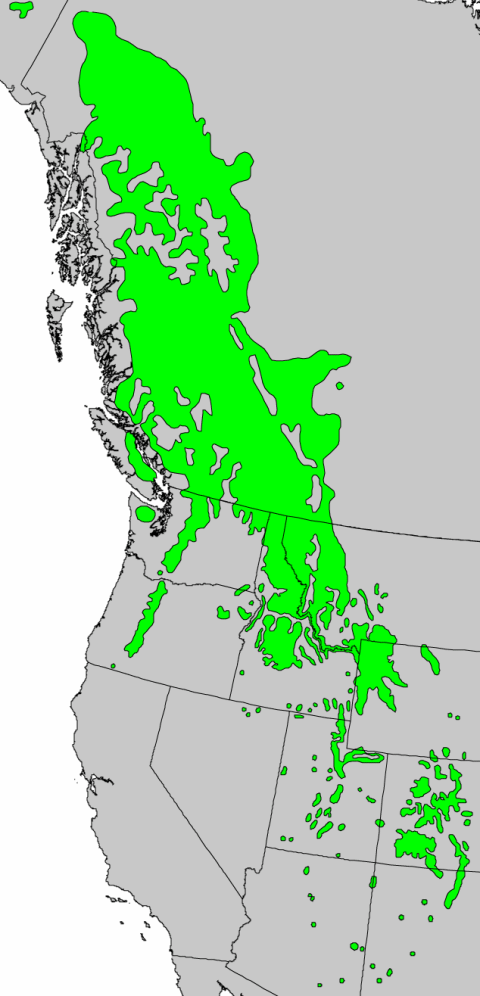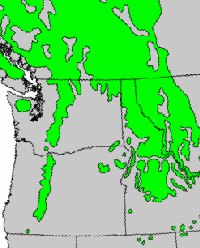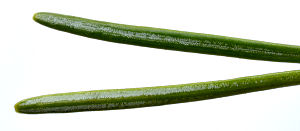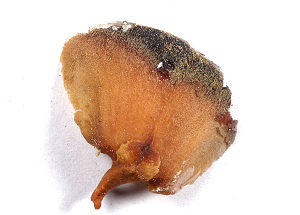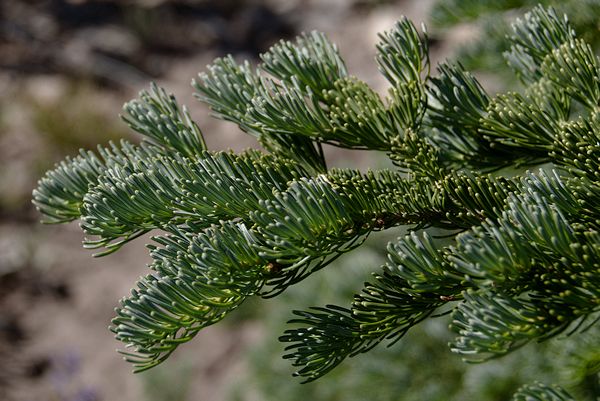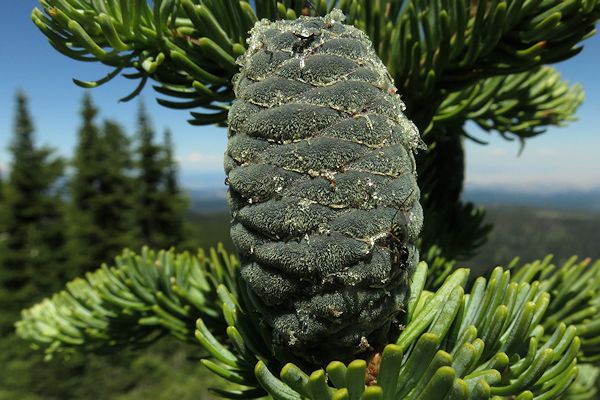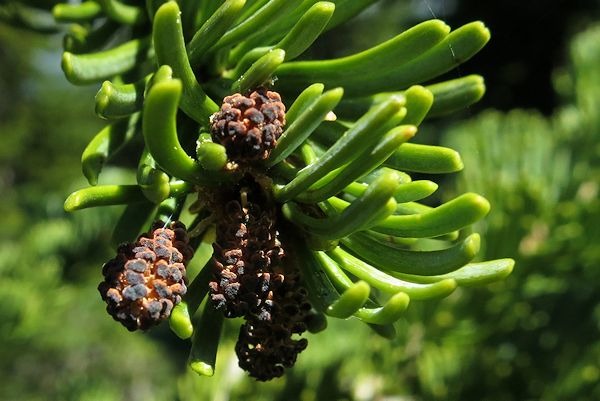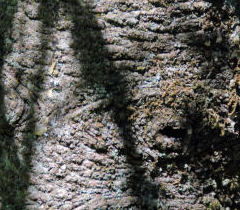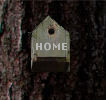 |
Northwest Conifers |
AboutAll ConifersConifersLow-elevationHigh-elevationOthersEast SideSouthwestNon-natives——————Conifer ConesIndexMore Info |
Subalpine Fir – Abies
lasiocarpa
|
|
Subalpine fir at Lookout Mountain |
Subalpine fir often grows at the timberline, where it is easily recognized by the narrow spire shape of its upper branches, a clear adaptation to heavy snowfall. Below the timberline, it can grow to over 150 feet (45 meters). Needles: The needles curve upward in a uniform manner. They have white lines on both sides, two on one side and one on the other. Pacific silver fir and noble fir also grow near the timberline, but Pacific silver fir has white lines only on the lower side of the needles, and noble fir has straight needles with a sharp curve where they attach to the twig.
Needle top and bottom Cones: The purple cones sit upright on the branch and fall apart at maturity, leaving a cone core spike on the branch. The cones often ooze a white resin. You won't find cones on the ground, but you might see some scales like this:
Where it grows: Subalpine fir grows in the Cascades and Olympics. It also grows throughout the Rocky Mountains and northward to Alaska. Although subalpine fir is shade-tolerant, it does not compete well with other conifers growing in the shade. Subalpine fir at Hoyt Arboretum Uses: While it has few commercial uses, subalpine fir is an important component of the subalpine forest community, providing habitat for animals and protecting watersheds that provide our drinking water. Names: Lasiocarpa means "hairy fruit," a reference to the fibers that protrude from the cone scales (not shown in photo). Other common names: alpine fir, white fir, balsam fir, and Rocky Mountain fir.
|
Pollen cones
|
© 2011 Ken Denniston

